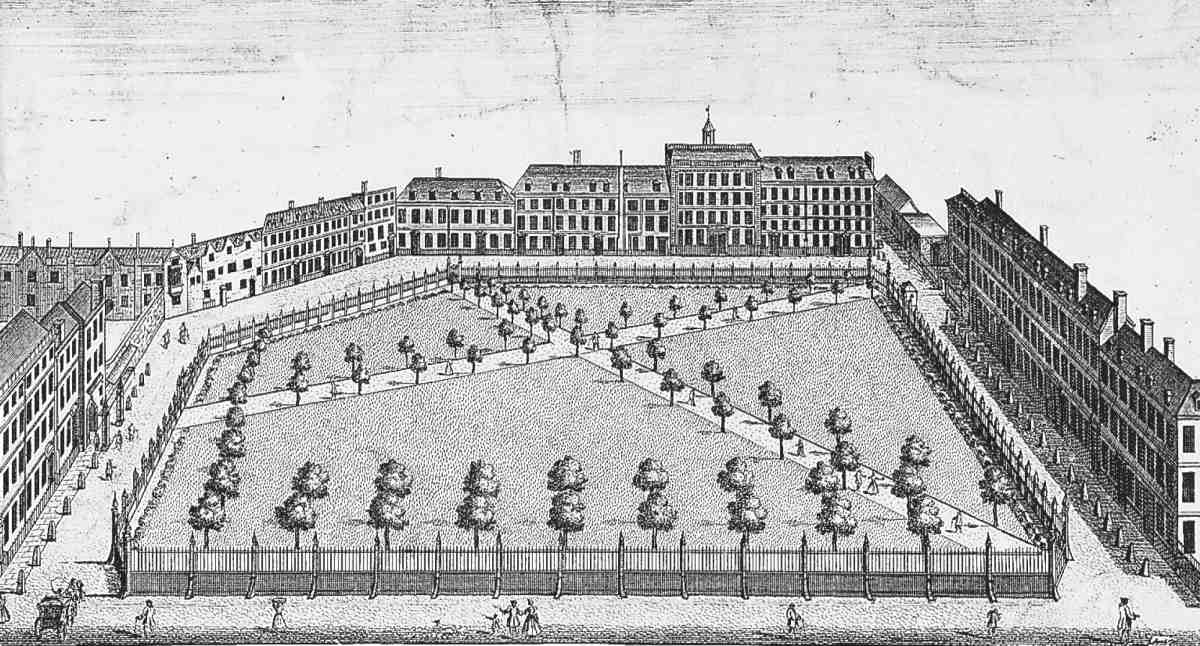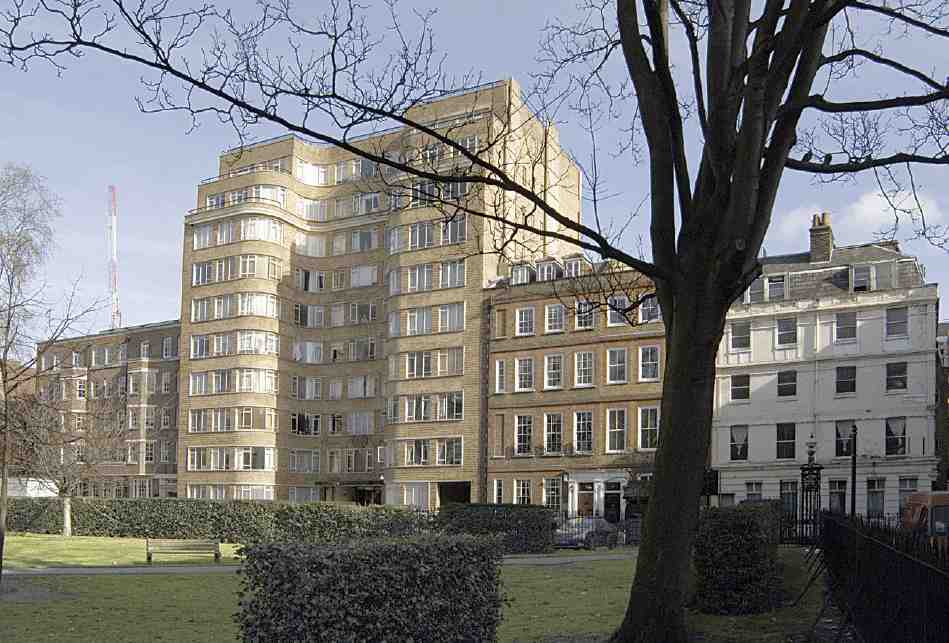Charterhouse Square was originally a churchyard for burials, as an adjunct to Charterhouse Priory. Charterhouse Priory was a religious house of the Carthusian order of monks which was set up in Clerkenwell in 1371. It comprised a large part of Clerkenwell running north from its main gate, which still exists today, along the north side of Charterhouse Square.

Charterhouse Square itself – for most of its life called Charterhouse Yard – was outside the area of the Charterhouse Priory proper. In the 14th century it was employed as a huge burial pit for victims of the Black Death. Vast numbers of bones and skeletons were uncovered during sewerage works in 1834 and taken away for burial elsewhere. More were found during archaeological excavations in 1998.
The Charterhouse fell victim to Henry VIII’s ‘Dissolution of the Monasteries’. The Crown seized its lands and assets. Charterhouse itself and Charterhouse Yard were sold first to nobles and ultimately to Thomas Sutton in 1611. He dedicated the land as Sutton’s Hospital, a charity which remains the owner today.

The land around the old churchyard – the land on which buildings now stand – was not included in the hospital estate and passed through various private owners over the centuries.
In the 17th century, it was a high-class neighbourhood and one writer referred to the ‘palaces’ in Charterhouse Yard, of which one was occupied by the Venetian ambassador.
But by the early 18th century residents or been described as being annoyed by cattle being driven through Charterhouse Yard from Aldersgate Street to Smithfield and referred to the square being ‘daily annoyed with vast numbers of disorderly persons who tear down the trees and fill it with noise and nastiness’.
In 1687, a narrow road, today’s Hayne Street, was created between Long Lane and Charterhouse Yard. The governors of the Charterhouse were so hostile, they tried to get it closed, and eventually they set up a porters box there to vet visitors.
During the 18th century, the name ‘Charterhouse Square’ gradually gain currency and ‘Charterhouse Yard’ fell out of use.
The biggest change was the introduction of the railway in 1864 – which involved creating an extension of the existing railway from Farringdon to Moorgate and building a new station, which was originally called Aldersgate Street station, and later Barbican station.
To lay the new line, the railway company had to buy up the south side of the square and knock down all the houses. Showrooms and warehouses were put up on the land that remained, but they were all quite shallow as a result of the railway line now occupying much of the previous depth of the plots.
The square ceased to be a residential area. Hotels appeared, particularly the Charterhouse Hotel on the site where the building housing the Malmaison Hotel was later built.

To prevent the square itself becoming full of “common beggars, vagabonds, and other disorderly persons, for the exercise of their idle devotions, and other unwarrantable purposes”, the governors of Sutton Hospital put up iron railings and gates in 1825. These railings were melted down for war purposes in 1942, but they were replaced when a big restoration of the gardens took place in 1949-51. Trees in the square were blown down in the ‘great storm’ of 1987, but some of the remaining plane trees may go back as far as 1853 when the existing trees were replaced in a big refurbishment of the garden. The elaborate gates at the end of the west and south sides were a gift from the City Corporation in 1874. They were designed by Sir Horace Jones (the City of London’s surveyor – most famous for designing Tower Bridge).
Despite all the commercial businesses surrounding it, Charterhouse Square still manages to keep the feel of a cathedral close.

No. 1 Charterhouse Square is a large building on the corner with entrances in Carthusian Street. It was probably built in 1897.
Nos. 4 and 5 Charterhouse Square are surviving houses from extensive rebuilding of the square during the reigns of William and Mary in about 1700. But it’s thought that the fronts may have been rebuilt or refaced later in more modern (but still Victorian) bricks. Nos. 4 and 5 Charterhouse Square have been offices since before the First and Second World Wars respectively.

Next in the square, at Nos. 6 to 11 Charterhouse Square, comes Florin Court, the striking Art Deco block of flats with its undulating frontage and flowing canopy, famous for being the home of Agatha Christie’s fictional detective, Hercule Poirot, in the ITV series, ’Poirot’. I’ve written a separate post on this building.

At the top of this east side of the square, Nos. 10-11 Charterhouse Square are meant to look like Victorian or Georgian houses, but in fact it’s an office block built in 1959, not all that cunningly disguised as period houses!

The buildings on the north side of the square, near the entrance to the historic Charterhouse, are houses dating from the 17th to 19th centuries. From about 1870 they were hotels, but since just before the War, they’ve been used as offices.
The dominant feature on this side of the square is the Malmaison Hotel, which was purpose-built as the Charterhouse Hotel in 1989–1902. If it opened in 1902 and had 107 bedrooms. During the First World War it became a military hospital. It was bought by St Bartholomew’s Hospital in 1927 and, for decades, it was used as nurses’ accommodation. It was returned to hotel use in 2004 as the Malmaison Hotel. The original front was retained, but it was completely rebuilt inside.

No. 17 Charterhouse Square, on the north-west side, was originally a house built in 1716. No. 22 Charterhouse Square was part of a row of houses built in 1787.

The whole of the west side of the square is occupied by a single building, Nos. 23-28 Charterhouse Square. The first part of the block was built in 1956 and it has been greatly extended and refurbished since.

The row of buildings along the south side of the square, on the other side of the road, are Nos. 33-43 Charterhouse Square. As described above, they were all built in 1877 after the new railway line behind them had been constructed. The buildings was partially emptied during works for the Elizabeth Line, but they are mainly offices and studios as well as a nursery school.

